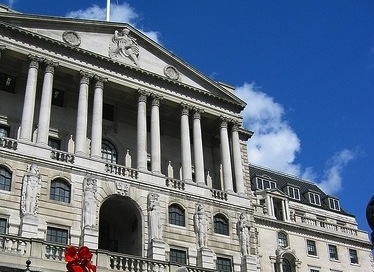
'Bank rate cut more likely as prospect of rise recedes'

The prospect of an interest rise in the bank continues to “recede into the distance”, experts say, as the Bank of England freeze gets close to the historic seven year mark.
The Bank of England’s Monetary Policy Committee voted again to keep the rate at 0.5% today – this time unanimously with a 9-0 result, unlike previous months.
There has even been the suggestion today that a cut is more likely to happen before a rise.
Interest rate markets are pricing in a one in three chance of a cut in interest rates this year, compared to a one in twenty chance of a rise.
There has been no change since March 2009 and Hargreaves Lansdown estimated cash savers have lost out on £160 billion in interest payments since the financial crisis.
Chartered Financial Planner Rohan Sivajoti, founder of Postcard Planning and advisory services director at robo-adviser eVestor, said: “With a unanimous vote to keep interest rates unchanged, a mediocre global economic outlook and growing deflation fears, ‘Super Thursday’ has proved to be anything but.
“Beleaguered savers, who yet again will be inwardly groaning at the news, may also be resigned to the fact that they have limited options at present. However, now more than ever, savers need to make their investments work harder for them.
“Those looking to secure their financial future, should review deposits and options for investments and look at reducing debt while it is still relatively cheap to do so.”
Calum Bennie, savings expert at Scottish Friendly, said: “Today’s unexpectedly unanimous decision to hold interest rates means we are destined to mark the seventh year of historic low interest rates next month.
“The Bank of England holding interest rates at these lows is now a familiar sight for everyone. Its decision to lower estimated GDP growth together with its view of continuing low inflation, shows we are still a long way off from a rate rise.
“Now that we are no longer holding our breath on Mark Carney and co pulling the trigger on a rate rise, savers continue to see dismal returns on their cash. For those wanting to grow their savings over the long-term, now is the time to consider stocks and shares ISAs as an alternative way of planning for the future, although risk is attached.”
Laith Khalaf, senior analyst at Hargreaves Lansdown, said: “An interest rate rise is like the pot of gold at the end of the rainbow, the nearer you get to it, the further away it moves.
“A rise in rates now looks firmly in the long grass, with growth forecasts cut and cheaper oil putting downward pressure on inflation, which is already way below the Bank of England’s target.
“Markets are currently pricing in a rate rise in the middle of 2017, though they have been consistently premature in their forecasts, and reaching the dubious milestone of a decade of ultra-low interest rates is now a distinct possibility.
“Of course low interest rates have kept the wheels turning, albeit slowly, and many people are still enjoying low mortgage payments as a result of loose monetary policy. However the danger is the longer interest rates stay low, the more comfortable people get with higher levels of debt, and the more painful rate rises eventually prove to be.
“Our investors will know we have long been of the opinion that interest rates are going nowhere for the foreseeable future, and as we see no evidence to relieve us of that view as we look forward into the coming year.’
Ben Brettell, senior economist at Hargreaves Lansdown, said: “The prospect of an interest rate rise continues to recede into the distance. Today’s vote to leave rates on hold wasn’t surprising in the slightest, but the fact that even arch-hawk Ian McCafferty backed down and voted for no change sends a clear indication that interest rates are going nowhere fast.
“Overnight Index Swap markets are now pricing in just a 5.9% chance of higher rates by December. More interestingly they also show a 33.2% chance that rates will be cut this year.”
Helal Miah, investment research analyst at The Share Centre, said the bank’s outlook for the economy will attract close scrutiny.
She said: “It expects the UK economy to be weaker in 2016 than earlier forecast, with GDP growth falling from 2.5% to 2.2% and risk to this forecast more likely to be on the downside. Growth forecasts for 2017 have also been reduced. They expect wage growth to be weaker too, citing the headwinds generated due to the state of global markets and the weaker Chinese economy over the next three years.
“This clearly shows the Bank is worried over the prospects of UK growth, and it is therefore very unlikely that there will be any rate cuts in 2016.”
